Trends in kitchen design reflect how we live and what we value. As family life has speeded up, with multiple schedules at play, the kitchen has become a place for everyone to catch up and hang out. We’re spending more time at home, too, so it’s a space to entertain and even to work. If you are planning a kitchen redesign, here are some trends to watch out for.
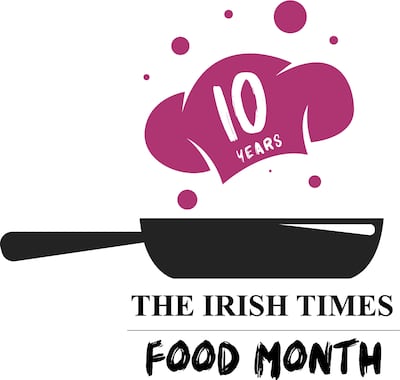
Oh so quiet
Gone are the days of the separate diningroom, or of families gathering in a sittingroom at night to watch telly together. Life is altogether more fluid now and so are the boundaries in our homes. Large open-plan living spaces enable us to multitask — to supervise homework while cooking, to do laundry while answering emails, or to run the dishwasher while catching the news headlines. With all this going on, it’s no wonder one of the big trends in kitchen design is quieter appliances.
The drive for energy efficiency means dishwashers run for longer. Some eco-cycles go for 2½ hours. It can be hard to chat or relax with a noisy appliance thrumming in the background, says Dave Fagan of custom kitchen design company Kube, so dishwashers and other appliances with low decibel levels are in increasing demand.
Noisy extractor fans are the other big offender in an open-plan space. “We have some customers who say, we don’t turn on our extractor fan because of the noise,” says Fagan. A hob with a downdraft mechanism, such as those by Bora, has a low-noise fan. This makes cooking a quieter affair. “The extractor is located underneath the worktop so the noise is reduced massively,” says Fagan. “It will take all your cooking smells, steam and grease straight down into the extractor and you don’t have the noise. You can cook and talk at the same time.” Bulky extractor hood, begone.
READ MORE
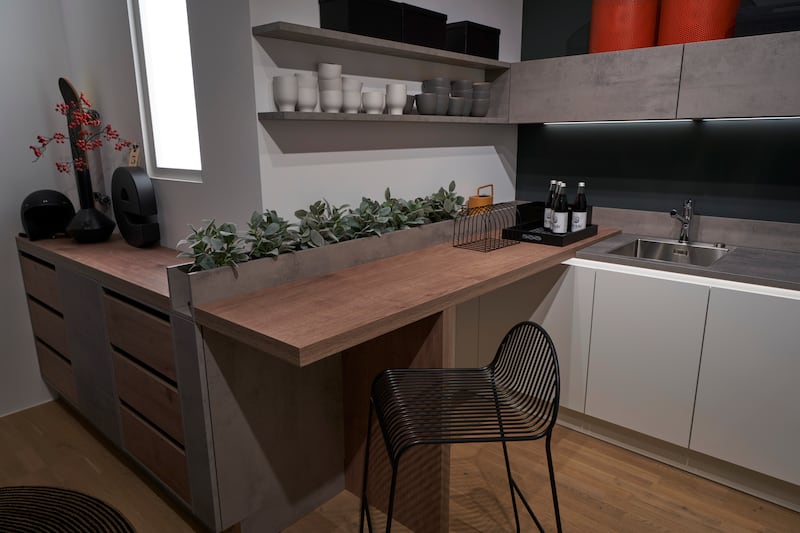
On tap
Many working from home have tried to replicate their morning takeaway coffee ritual. Cue record sales of high-end domestic coffee machines. If you have already had everyone over to see and sample from your fancy-pants coffee maker, the next level up is a fancy-pants tap.
Capable of producing boiling hot water, filtered chilled sparkling water, filtered chilled cold water and constant 65-degree warm water, taps like those by Quooker are the ultimate convenience, says Kube’s Fagan. “It’s all in one system underneath your sink,” he says. “Some people are buying an eight-pack of sparkling water a week. There’s the cost, the plastic and it takes up so much space in the fridge. With this tap, you don’t have to buy bottled water any more, it’s doing it all for you,” he says. Taps start at €1,300 and the running cost is less than a kettle, he says. The tap is quieter than a kettle too.
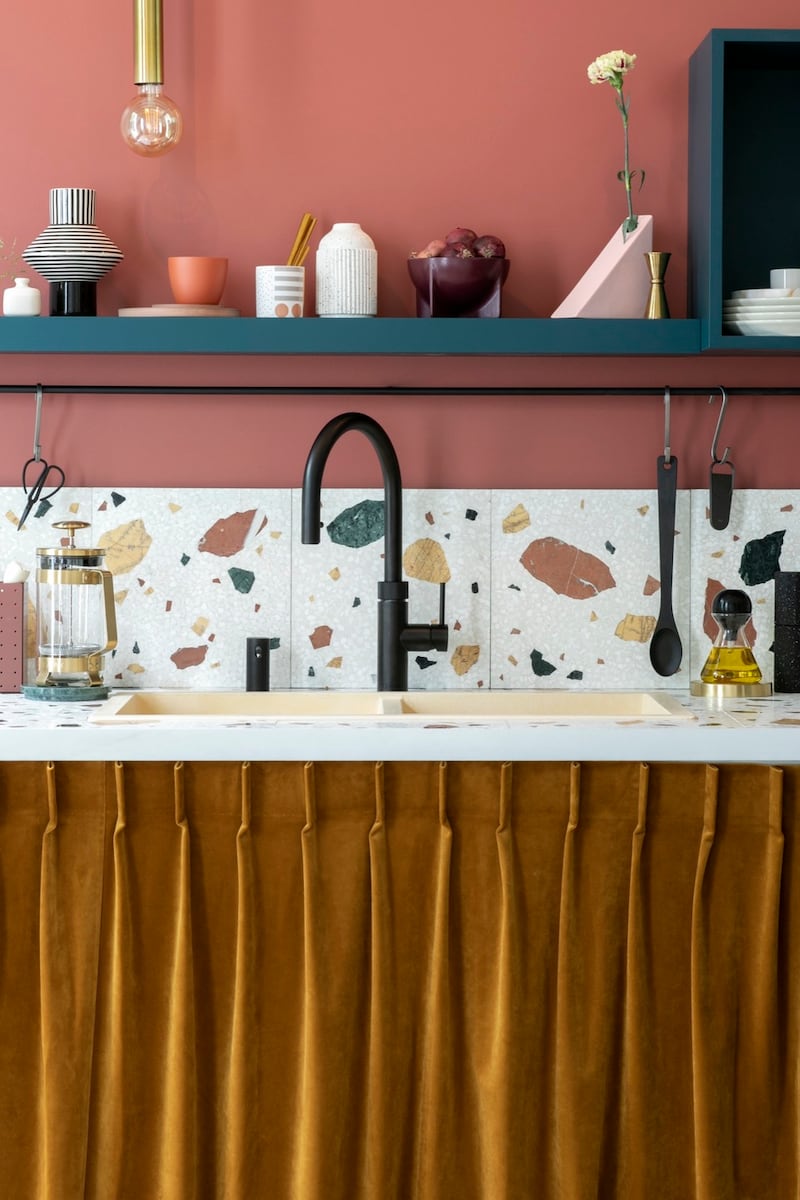
Home office
Kitchen designers are meeting customer demand for work-from-home space too. Tá Mamaí sa chistin, all right — but she’s not just cooking, as was depicted in primary-school Irish language textbooks of old. Mommy and Daddy are just as likely to be cooking up a work presentation or taking a Zoom call in the kitchen these days.
“Customers are telling us, I have to work two days from home. I don’t want to be upstairs in my son’s bedroom, I want to be in the nicest part of my house, which is my kitchen or extension area,” says Fagan.
Everyone wants a kitchen home office space that doesn’t look out of place when it’s not in use. When office work is done, the desk or cubby-hole area is doubling up as a storage, display or prep area.
Laptops, iPads and phones need to be charged, of course, but who wants a rash of sockets and plugs on their splashback, or an island or worktop strewn with wires? Placing sockets on the outside of drawers tucked under worktops, or in drawers, is a way to keep charging devices out of the way.
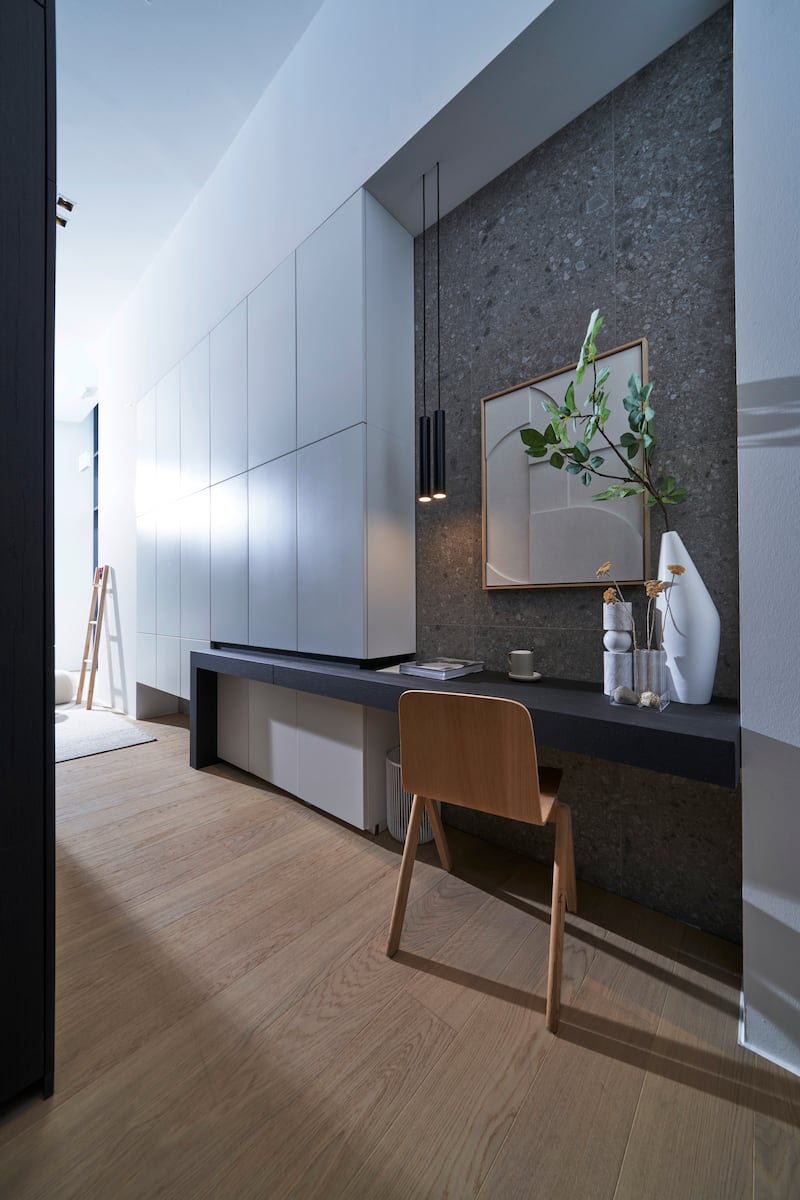
Hidden from view
Those who keep their toaster in a cupboard might well be on to something. Free-standing or built-in larders — that is, floor-to-ceiling cupboards with shelving, drawers and perhaps a countertop with electrical sockets, can hide clutter whilst leaving items accessible, says interior architect Gillian Sherrard of Sherrard Design. Larders can provide a handy place to keep small appliances too, like said toaster and a coffee station. Sherrard refers to this as an “appliance larder”.
If you’ve got the space, a pantry, separate from the kitchen, is another option. The coffee machine, wine fridge, handheld vacuum, vases and bulky consumables such as soft drinks can go here too.
Hiding the business of the kitchen is definitely a thing. Many kitchens now function as a night-time lounge and relaxation space. Not everyone wants to look at a bank of electrical appliances with all their lights, dials and digital clocks while relaxing on the sofa. It’s no wonder there’s a move towards hiding ovens, microwaves and fridges from view.
“I can’t bear ovens on view. I can’t bear all those appliances, they look really ugly,” says Sherrard. She has one client who has a completely appliance-free kitchen. Indeed, Neff has just brought out an oven that you can put behind doors, she says.
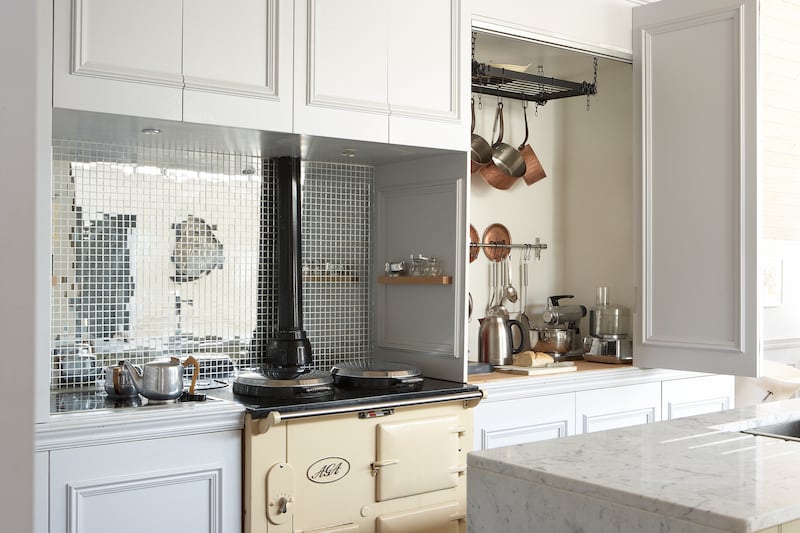
Kitchen farming
Growing food in your kitchen? Yes, this is a trend, and we’re not talking about the wilting basil plant on your window sill. “Miele is bringing out a herb fridge that I am dying to put in,” says Sherrard. “It’s like having a mini greenhouse in your kitchen.”
The appliance manufacturer has broken into the area of “vertical farming”. No larger than a standard fridge, the herb fridge offers perfect conditions with minimal effort to grow your own microgreens.
From basil to parsley, red pak choi or wasabina mustard, the plants grow on seed mats made from upcycled fabric waste. Where a single head of field-grown lettuce requires up to 120 litres of water to grow, the same volume of water is sufficient to supply one of these appliances for a year. This is one appliance you might not want to hide.
Dark materials
Speaking of green, black green is the new colour emerging for kitchen cabinetry in 2023, says Kube’s Dave Fagan. A dark green with undertones of black, it’s an easy, soothing palette to live with. “It’s really dependent on the customer’s space but, with new extensions, eight out of 10 customers have big slide-away doors into their gardens. That’s letting lots of light in and allowing them to be a bit braver with their colours,” says Fagan.
Island life
From preparing food to entertaining friends to make-and-do with the kids, kitchen islands have never worked harder. Choosing a hard-wearing, stain-resistant worktop is the challenge. Fagan recommends a material called Dekton. “It’s indestructible. You can have permanent marker on it, you can cook on it, chop on it. You can do absolutely anything and it will not scratch. If you go away for the weekend and your kids throw a big party, it’s not going to be destroyed.”
Marble is still covetable, of course. “If you have a house that doesn’t have to work that hard, where you may not even cook once a week, marble will look stunning. But for your average family, it’s just going to be impossible to keep clean,” says Fagan.
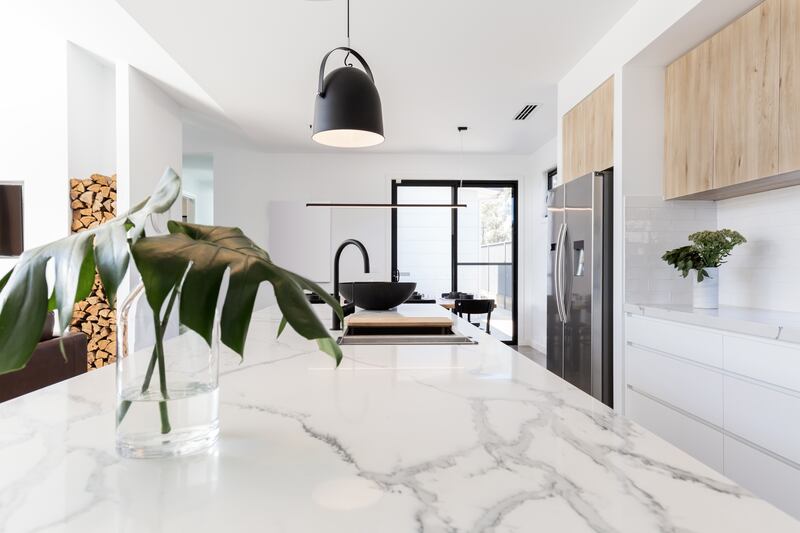
Don’t follow trends
Of course the downside of anything too trendy is that it can date quickly, says Gillian Sherrard. “I was in one house and all the kitchen worktops were black granite and it just looked so dated. Try to go for something timeless that is not too on-trend like a really good quality stone,” she says. Silestone kitchen worktops, which are an imitation marble with a high resistance to stains and knocks, are a good option.
You can go old-school too. “I did a kitchen recently and I did a formica top on it with a thick 600mm edge — you can get formica in about a hundred colours, it costs nothing and it looks really cool,” says Sherrard.
Every house I go into, the kitchens look the same, there is no individuality and it drives me mad. Try to look for influences around the world — France, Germany, Copenhagen, Sweden — rather than just south county Dublin
Common sense is always in fashion. People can agonise over splashbacks, but continuing what is on your worktop on the splashback is a neat solution. Floor tiles should always be “the same colour as the dirt”, she says. This will save heartache and a lot of mopping.
When designing your kitchen, get all the boring-but-vital stuff figured out first, says Sherrard. Decide where the sink, oven and the fridge go. These should be in a triangle for easy access. Decide what appliances you want first too, rather than designing your kitchen and working out that they don’t fit, she says. Once that’s done, you’ll know what you have left for storage, surfaces and seating.
Don’t be afraid to mix and match and come up with your own style, says Sherrard. “Every house I go into, the kitchens look the same, there is no individuality and it drives me mad. Try to look for influences around the world — France, Germany, Copenhagen, Sweden — rather than just south county Dublin.”
“I’ve done kitchens where I have literally got the guy putting the skirting boards on to make the kitchen. It depends on what you want. I tend not to follow trends, it’s nice to do something individual.”












